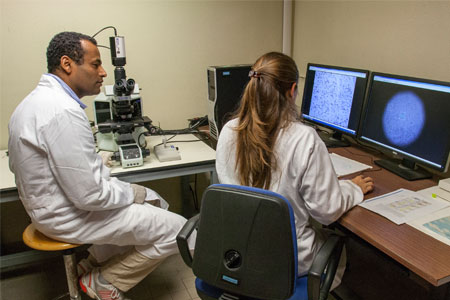- Autori:
-
De Giorgi, Vincenzo; Silvestri, Flavia; Cecchi, Giovanni; Venturi, Federico; Zuccaro, Biancamaria; Perillo, Gabriella; Cosso, Federica; Maio, Vincenza; Simi, Sara; Antonini, Pietro; Pillozzi, Serena; Antonuzzo, Lorenzo; Massi, Daniela; Doni, Laura
- Titolo:
-
Dermoscopy as a Tool for Identifying Potentially Metastatic Thin Melanoma: A Clinical-Dermoscopic and Histopathological Case-Control Study
- Anno:
-
2024
- Tipologia prodotto:
-
Articolo in Rivista
- Tipologia ANVUR:
- Articolo su rivista
- Lingua:
-
Inglese
- Formato:
-
Elettronico
- Referee:
-
No
- Nome rivista:
- CANCERS
- ISSN Rivista:
- 2072-6694
- N° Volume:
-
16
- Numero o Fascicolo:
-
7
- Intervallo pagine:
-
1-11
- Parole chiave:
-
dermatoscopy; dermoscopy; early-stage melanoma; metastasis; skin cancer; tumor thickness
- Breve descrizione dei contenuti:
- : Despite being early-stage tumors, thin cutaneous melanomas contribute significantly to mortality and have a rising incidence. A retrospective case-control study was performed to identify clinical-dermoscopic and histopathological variables linked to local and distant metastases in melanomas ≤0.8 mm. Data from 1 January 2000 to 22 June 2022 were analyzed from two Italian skin cancer referral centers. Sixteen patients with ≤0.8 mm melanomas developing metastases were studied compared to controls without metastases over 5 years. Statistical analysis involved Pearson's chi-squared test or Fisher's exact test. Of the 1396 cases, 1.1% progressed. The median diagnosis age was 49 (range 28-83), with 56.3% men and 43.7% women. The torso was the primary tumor site (43.7%). Clinically, lesions were pigmented (>10 mm diameter: 73.3%, ≥3 colors: 80%). Dermoscopically, the common features were white patches (73.3%), atypical vascular patterns (66.5%), blue-gray areas (60%) and absent pigment networks (60%). Histopathologically, all cases had adverse features like regression (87.4%), dermal mitoses (50%), a vertical growth phase (62.5%) and ulceration (12.5%). These findings were statistically significant compared to controls (p < 0.05). In ≤0.8 mm melanomas, specific clinical-dermoscopic traits might indicate higher metastatic potential when paired with adverse histopathological features.
- Id prodotto:
-
138982
- Handle IRIS:
-
11562/1124470
- ultima modifica:
-
26 aprile 2024
- Citazione bibliografica:
-
De Giorgi, Vincenzo; Silvestri, Flavia; Cecchi, Giovanni; Venturi, Federico; Zuccaro, Biancamaria; Perillo, Gabriella; Cosso, Federica; Maio, Vincenza; Simi, Sara; Antonini, Pietro; Pillozzi, Serena; Antonuzzo, Lorenzo; Massi, Daniela; Doni, Laura,
Dermoscopy as a Tool for Identifying Potentially Metastatic Thin Melanoma: A Clinical-Dermoscopic and Histopathological Case-Control Study
«CANCERS»
, vol.
16
, n.
7
,
2024
,
pp. 1-11
Consulta la scheda completa presente nel
repository istituzionale della Ricerca di Ateneo 








